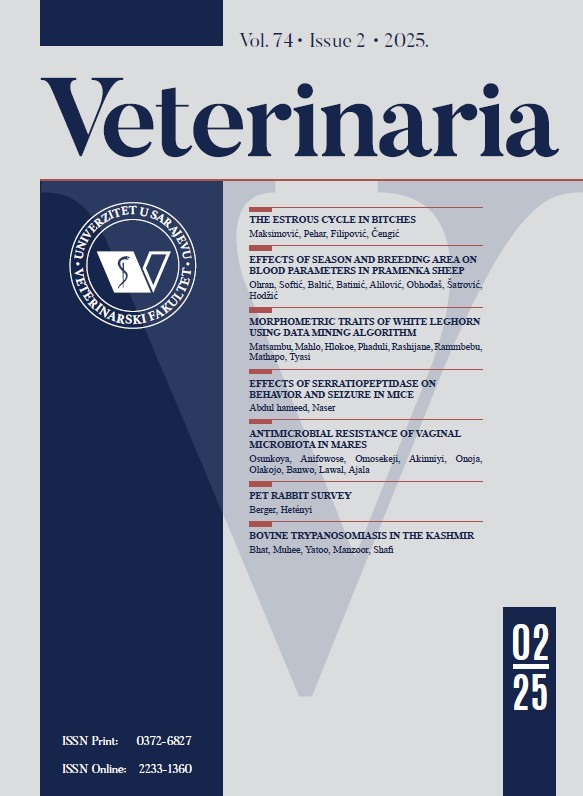Comparative activity of cecropin a and polymyxin b against frog bacterial pathogens
Keywords:
frogs, antimicrobial, cecropin, bacteris, polymyxin, resistanceAbstract
The antimicrobial activity of two antimicrobial peptides, cecropin A and polymyxin B against different bacterial pathogens associated with bacterial dermatosepticemia, a fatal bacterial infectious disease of frogs was investigated. The peptides were tested in serial of concentrations (100-0.19 µg/ml) for growth inhibition of seven pathogens: Aeromonas hydrophila, Chryseobacterium meningosepticum, Citrobacter freundii, Klebsiella pneumoniae, Pseudomonas aeruginosa, Proteus mirabilis and Serratia liquefaciens. Their antimicrobial activity was compared with that of two antimicrobial peptides from frog skin, magainin 2 and aurein 2.1. Both cecropin A and polymyxin B, completely inhibited the growth of three pathogens: C. freundii, K. pneumoniae and P. aeruginosa at a concentration some sixteen times less than two skin peptides. Furthermore, cecropin A inhibited the growth of three pathogens resistant to the two skin peptides, A. hydrophila, C. meningosepticum and P. mirabilis. Polymyxin B also inhibited the growth of three pathogens resistant to the skin peptides, A. hydrophila, C. meningosepticum and S. liquefaciens. Cecropin A and polymyxin B have marked antibacterial activity against different frog bacterial pathogens indicating potential for therapeutic measures.
Downloads
Published
How to Cite
Issue
Section
License
Copyright (c) 2020 Ermin Schadich, Anthony Leonard James Cole, Drusilla Mason

This work is licensed under a Creative Commons Attribution 4.0 International License.







